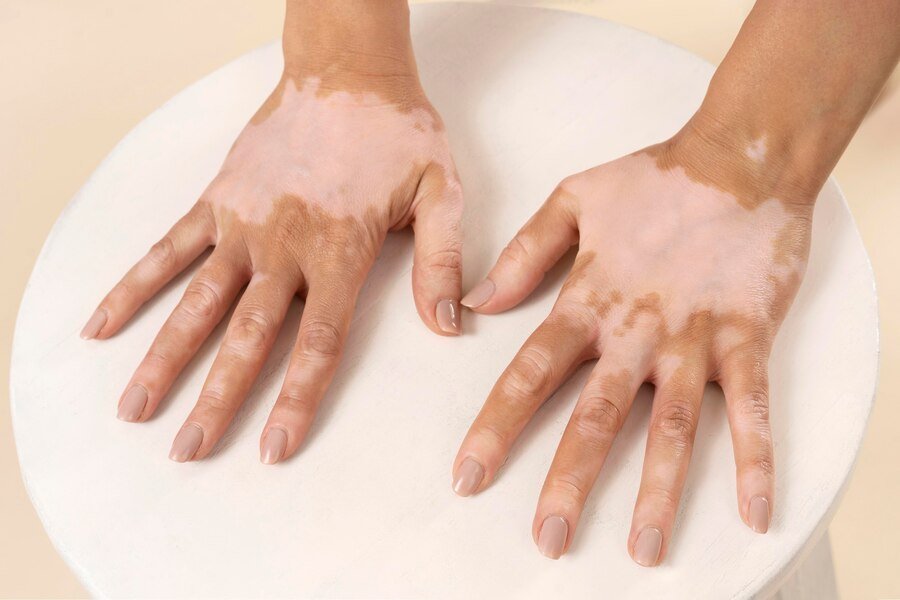Vitiligo is a long-term skin condition that causes the skin to lose its color. Loss of pigment leads to skin becoming lighter or appearing white than the actual skin tone.
It affects the face, hands, arms feet, and in some cases the inside of your mouth, nose and genitals.
WHAT CAUSES VITILIGO?
The main cause of this skin condition is the lack of pigment known as melanin in the skin. Several research has shown that vitiligo could be caused by:
- An autoimmune condition
- Genetic changes
- Frequent emotional or physical stress
- Environmental triggers
TYPES OF VITILIGO
There are several types of vitiligo. These include:
Generalized
This is the most common type of vitiligo that causes discolored skin in different areas of the body.
Segmental
This kind only covers one side of your body or one specific area, such as your hands or face.
Mucosal
This type of vitiligo marks mucous membranes of your mouth and/or genitals.
Focal
This is a rare kind where the macules progress in a small area yet do not cover in a particular pattern, within one to two years.
Trichome
This type causes a target area – with a white or discolored center area, then followed by a layer of lighter pigmentation and then the natural skin tone.
Universal
This is also an uncommon type of vitiligo that causes more than 80% of your skin to become pigment-less.
COMMON SYMPTOMS OF VITILIGO
There are several signs and symptoms of vitiligo including:
- Skin patches or mucous membranes that lose color. These appear whiter and lighter than the actual skin tone.
- Several areas of the hair on the body turn white, gray or silver
- Symptoms are typically mild and impact a small portion of the body. However, in some cases, the symptoms may be severe and cover a large area of your skin.
- Some individuals with vitiligo have itchy skin before the discoloration takes place.
HOW IS VITILIGO TREATED?
However, the treatment for vitiligo is not necessarily needed, there are cosmetic procedures available to reduce the appearance of it. A dermatologist may provide you with an effective treatment as per your requirements and the type of vitiligo. Common treatments for vitiligo include:
- Medications
- Light therapy
- Depigmentation therapy
- Surgery
- Counseling


